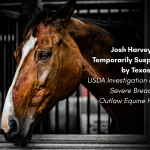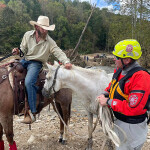Greener Pastures: Watching for Armyworms
Last summer the mid-south experienced a high infestation of armyworms. It left agriculture workers, hayfield and farm owners scrambling to find the best methods to remove the pests before they completely destroyed hayfields and crops. These caterpillars are known to destroy bermudagrass in just a matter of days.
Fall armyworms are unfortunately unpredictable so it is recommended to have a plan in place if you spot them in your pastures. According to Dr. Blake Layton Jr. with Mississippi State University Extension Office “some years, high populations do not occur until early fall, and the most heavily infested fields require only one or two sprays. Other years, damaging infestations appear as early as June, and some fields require six or more treatments.”
Armyworms are so unpredictable because they do not survive the winter months in the mid-south. They rebuild each year from moths that migrate from farther southern regions like South America, Caribbean Islands and South Florida. The timing of when the moths arrive varies each year. Some years they arrive earlier causing late summer infestations. The more southern regions of the mid-south usually experience higher infestations in late summer and early fall.
Dr. Layton reports that, “fall armyworms are primarily pests of grasses, including agricultural crops such as corn, sorghum, rice and millet. They especially like bermudagrass, regardless of whether it is a dwarf variety growing on a golf green, a field of sports turf, or a forage variety being grown for hay. Lush, well-fertilized grass is particularly attractive to egg-laying moths, and this is why infestations are so common in well-managed bermudagrass hayfields.”
Other forage grass that armyworms eat are bahiagrass, and dallisgrass. Dr. Layton advises that cattlemen and hay producers learn to watch strands of certain grasses as an early indicator of fall armyworm problems.
Layton states: “armyworms will also attack early planted winter grazing crops like wheat and ryegrass and sometimes destroy stands as these crops are emerging. Newly emerging crops can be seriously damaged by much lower populations that are required to damage established stands of perennial grasses.”
So how can one prepare for these pests? It is advised by the MSU Extension Office to think ahead and make sure you have the right equipment to treat an infestation early. Make sure you have a sprayer that is cleaned, repaired, and calibrated for immediate use. Know ahead of time which insecticide is best for your fields and if they are safe to use around horses and cattle and other livestock. Form a relationship with your county extension office and be prepared for heavy infestations before late summer and early fall.
Also, know the warning signs. Learn to recognize armyworms feeding patterns. Newly hatched caterpillars are too small to feed through a leaf blade according to Dr. Layton. The newly hatched caterpillars will feed on the underside of the leave. This creates “windowpanes” in the grass blades that appear silver or white. The grass will appear to have a subtle “frost” to it. Learning the early signs can help save a field. You can plan to do an early cutting on a hay field if the weather is ideal, or spray before too much damage is done.
It is important to scout for these caterpillars until the temperature starts to change. According to Dr. Layton, “In one laboratory study, conducted with caterpillars feeding on corn leaves at constant temperatures, the larval stage lasted about 22 days at 70 degrees, 14 days at 80 degrees, and 10 days at 90 degrees. Development rate is faster at higher temperatures, although it does begin to decline at temperatures above 93 degrees. Fall armyworms cannot survive freezing temperatures. Populations usually begin to decline a little before first frost. Armyworms cannot develop at temperatures below about 50°F.
The bottom line is you need to be concerned about fall armyworms in late fall hayfields and early-planted winter grazing pastures until you stop seeing them and temperatures drop. Some years the threat of fall armyworm infestations lasts longer than others because of high migration of moths. Depending on the weather, and late infestations are more likely during warm, ‘late’ falls.”
To learn more on how to be prepared for armyworms each year visit your county’s extension agency website and look for articles on Fall Armyworms. To read Dr. Layton’s report on armyworms
Visit: https://extension.msstate.edu/sites/default/files/publications/publications/P2717_web.pdf
.










